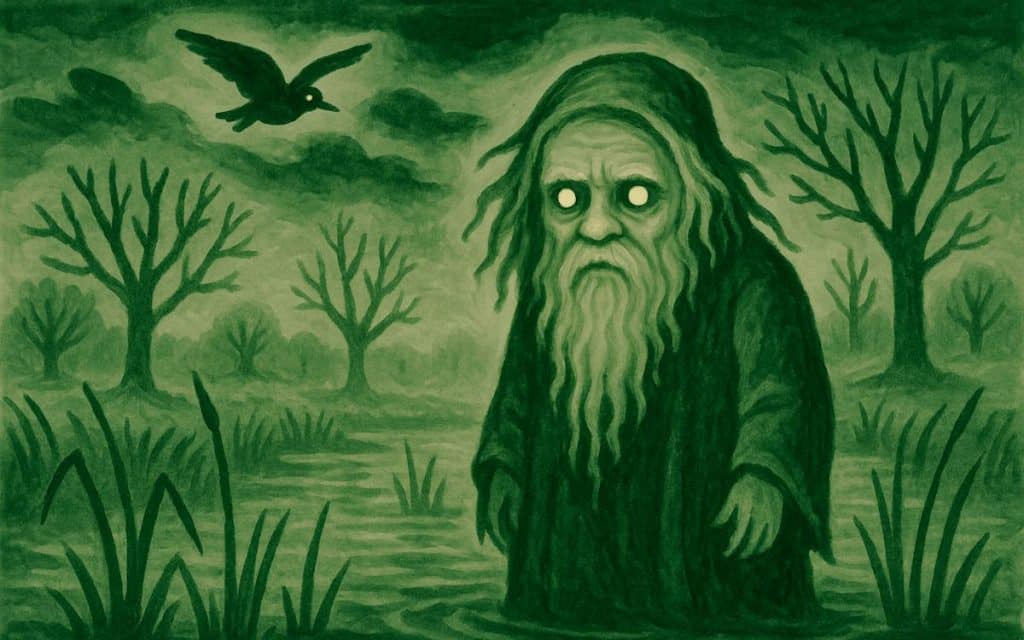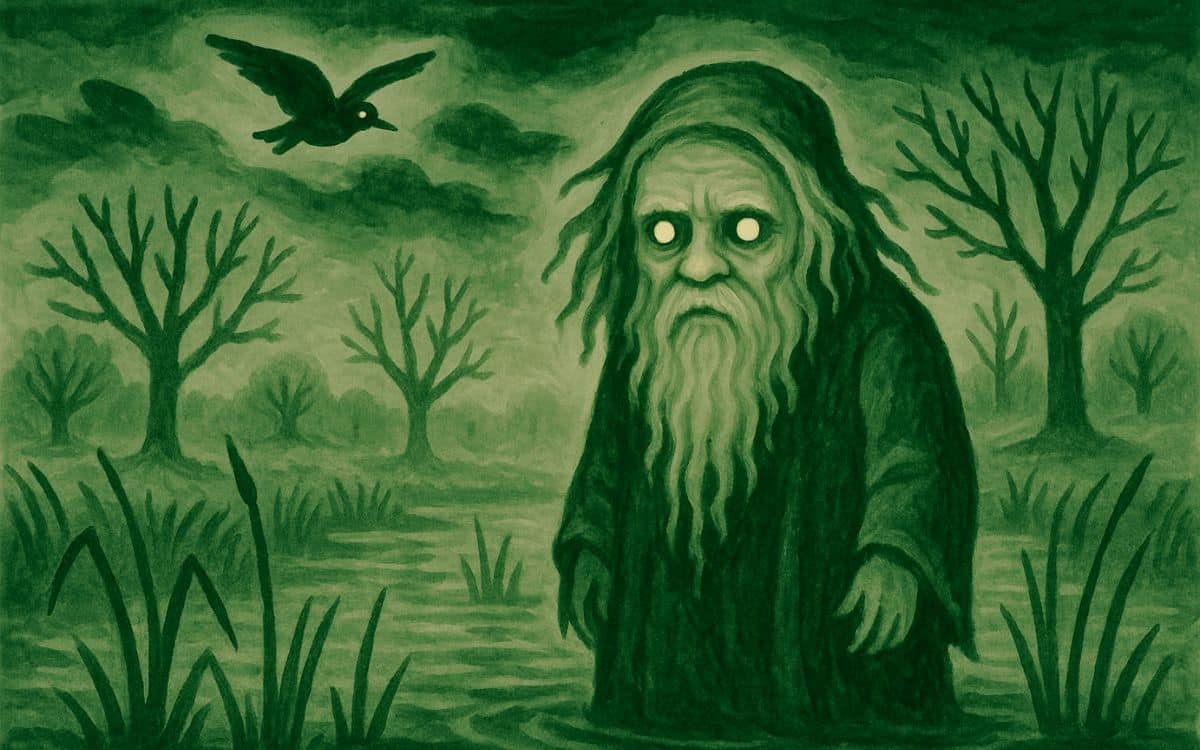Before the fens were fields, the people of Lincolnshire spoke of Tiddy Mun, a spirit older than the land, a shadow in the mist, a voice in the water
Who is Tiddy Mun?
Tiddy Mun isn’t your usual ghost or fairy. He’s older. Wilder. And rooted deep in the muddy lands of Lincolnshire.
He’s a bog spirit, tied to the Carrs and Fens—places already full of strange tales.
But while many spirits haunt houses or forests, Tiddy Mun watches the water. He controls it. Some say he is the water.
People said he was no taller than a toddler, but with the face of an old man. He had tangled white hair and a long beard.
His clothes were grey, like the mist. You might not see him coming, but you’d hear his laugh. It sounded like a peewit bird – sharp, lonely and cold.
When Tiddy Mun was pleased, the land was safe. The waters stayed low. But if he was angry, trouble followed.
In the 1600s, Dutch workers came to drain the Fens. They wanted to turn the bogs into farmland.
But the people living there believed the land didn’t belong to men. It belonged to Tiddy Mun. And he wasn’t happy.
Soon after the work began, the locals started to suffer. Animals died. People got sick. Walls cracked. It felt like the land itself was cursed.
They blamed Tiddy Mun.

People said Tiddy Munn was no taller than a toddler, but with the face of an old man. He had tangled white hair and a long beard.
To make peace, the villagers came together during the new moon. They poured water back into the dykes and said sorry.
They didn’t say his name – just called to him. And when they heard the eerie, lonely cry of a peewit or lapwing cutting through the dark, they knew.
That sound meant he had listened. It gave “surety” the waters would recede. And they did.
But Tiddy Mun wasn’t just about curses. He could help too.
If the bogs flooded and the water came too close to homes, people would go out at night and chant: “Tiddy Mun wi’out a name, tha watters thruff!”
They’d listen for the bird cry again, and feel relief when it came.
His moods could change, but he never acted without reason.
That’s what made Tiddy Mun different. He wasn’t evil. But he wasn’t good either.
He was wild, like the marshes. You had to respect him, or pay the price.
There were other beings in the Carrs too. The Tiddy People.
Small, imp-like creatures who danced on flat stones in the moonlight. Some called them Greencoaties or Strangers.
Offerings were left for them—bread, salt, even the first crops of the season.
Some versions of the story describe Tiddy Mun as their “king”, though not all sources agree on that.
Everything in the Fens felt alive. The land had moods. The mist moved like it had a mind of its own.
People feared the bogs, but they also trusted them. That’s why these stories lasted.
And they haven’t gone away.
In 2022, a bridge built over the River Nene at Guyhirn was named “Tiddy Mun Bridge”. A reminder that some names don’t fade.
Tiddy Mun wasn’t a ghost or a fairy. He was something older. A spirit of the land.
Hard to see, but always there.
If the waters rise, would he still listen?
If you walked the marsh at night, would you hear the peewit cry?
What do you think of Tiddy Mun’s tale? Have you heard stories of the Fens or seen something strange in the mist? Tell us in the comments below – we’d love to hear your story.



